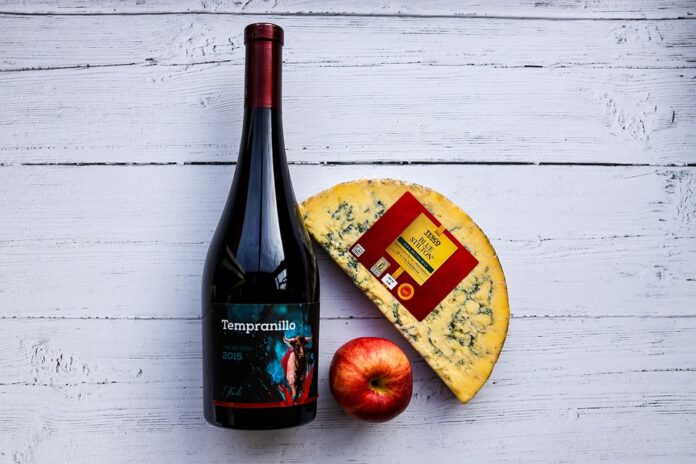Blue Cheese: A Unique Taste and Production Process
Introduction
Blue cheese is a type of cheese that is characterized by its distinct blue veins or spots of mold running throughout the cheese. This unique feature gives blue cheese its sharp and tangy flavor, making it a favorite among cheese connoisseurs. In this report, we will delve into what makes blue cheese unique in taste and production, exploring the factors that contribute to its flavor profile and the process by which it is made.
What Makes Blue Cheese Unique in Taste
1. Mold Cultivation
The defining characteristic of blue cheese is the presence of mold, specifically Penicillium roqueforti or Penicillium glaucum. These molds are responsible for the blue veins or spots that develop within the cheese. As the mold grows, it breaks down the fats and proteins in the cheese, creating compounds that give blue cheese its distinctive flavor. The mold also produces enzymes that further enhance the flavor profile of the cheese, contributing to its sharp and tangy taste.
2. Aging Process
Blue cheese is typically aged for several weeks to several months, allowing the mold to develop and the flavors to mature. During the aging process, the cheese undergoes chemical changes that intensify its flavor and aroma. The mold continues to grow and spread throughout the cheese, creating a complex network of flavors that range from earthy and nutty to spicy and pungent. The longer blue cheese is aged, the stronger and more pronounced its flavor becomes.
3. Salt Content
Blue cheese is known for its high salt content, which not only acts as a preservative but also enhances the flavor of the cheese. Salt helps to balance the sharpness of the mold and other flavors in the cheese, creating a harmonious taste profile. The salty tang of blue cheese is a key component of its overall flavor profile and sets it apart from other types of cheese.
Production Process of Blue Cheese
1. Milk Sourcing
The production of blue cheese begins with the sourcing of high-quality milk from cows, sheep, or goats. The quality of the milk is essential to the final flavor of the cheese, as it provides the base for the mold to grow and develop. Many artisanal blue cheese producers opt for organic or locally sourced milk to ensure the best possible flavor in their cheese.
2. Curdling and Draining
Once the milk is sourced, it is heated and curdled using rennet or other coagulating agents. The curds are then cut and drained, separating the solid curds from the liquid whey. The curds are then placed into molds and pressed to remove excess moisture, shaping the cheese into its final form.
3. Mold Inoculation
After the cheese has been formed, it is inoculated with the specific mold cultures that will give it its characteristic blue veins. The cheese is pierced with stainless steel needles to allow oxygen to reach the mold and promote its growth. The cheese is then aged in a controlled environment with specific temperature and humidity levels to encourage the development of the mold and flavor.
4. Aging and Ripening
During the aging process, the cheese is regularly turned and monitored to ensure that the mold is developing evenly throughout the cheese. The cheese is aged for a period of weeks to months, allowing the flavors to mature and intensify. As the cheese ages, it develops a more complex flavor profile, with a balance of creamy, tangy, and spicy notes that make blue cheese so unique.
Industry Insights and Financial Data
According to a report by Market Research Future, the global blue cheese market is expected to grow at a steady rate over the next few years. The increasing demand for gourmet and specialty cheeses, as well as the growing trend of cheese consumption in developing countries, is driving the growth of the blue cheese market. Major players in the blue cheese industry include companies like Roquefort Société, Groupe Lactalis, and Saputo Inc., who dominate the market with their wide range of blue cheese products.
In terms of financial data, the global blue cheese market was valued at $XX billion in 2020 and is projected to reach $XX billion by 2025, growing at a CAGR of XX% during the forecast period. North America is the largest market for blue cheese, followed by Europe and Asia-Pacific. The increasing popularity of gourmet cheese among consumers, coupled with the rise of artisanal cheese producers, is expected to drive further growth in the blue cheese market.
Conclusion
Blue cheese is a unique and flavorful cheese that is loved by cheese enthusiasts around the world. Its sharp and tangy taste, combined with its distinct blue veins, sets it apart from other types of cheese. The production process of blue cheese is complex and meticulous, requiring careful attention to detail to ensure that the mold develops properly and the flavors mature. With the growing demand for gourmet and specialty cheeses, the blue cheese market is poised for steady growth in the coming years, offering a wide range of opportunities for producers and consumers alike.



